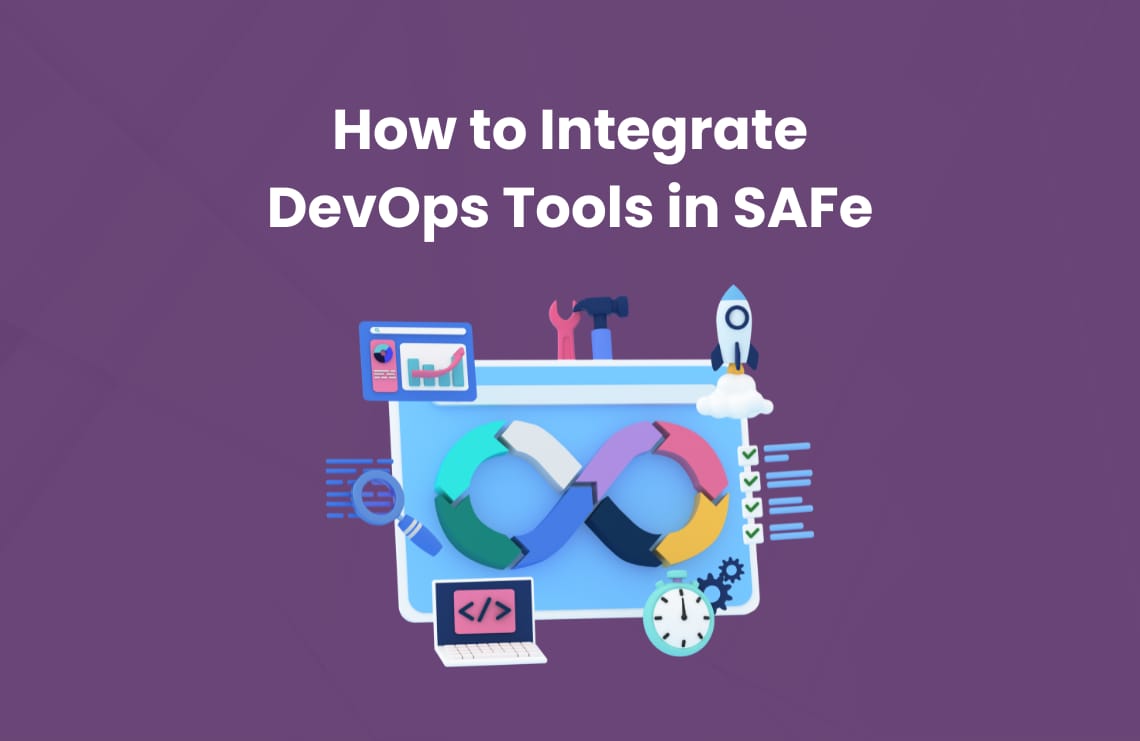Keeping up with industry developments is crucial for every software development firm. In order to improve their product delivery processes, businesses now must use agile approaches and frameworks such as Leading SAFe Certification. In order to guarantee effective coordination across teams and promote a culture of cooperation, one of the most important aspects of this journey is the seamless integration of Scaled Agile Framework Tools.
However, what about DevOps? Where does it go in the SAFe structure, and how can you use DevOps technologies to best advantage in order to strengthen your SAFe procedures? In this blog, we’ll go into the similarities between DevOps and SAFe, discussing the tactics and advantages of bringing these two frameworks together.
The combination of DevOps and SAFe
Let’s back up a little from the specifics of DevOps tool integration into a SAFe system and examine why combining them is so important. The Leading SAFe Certification provides a solid basis for growing Agile techniques inside big organizations, allowing them to complete even the most challenging projects successfully. For software development to be considered “Agile,” however, the complete software development lifecycle — from concept to implementation — must be included. DevOps is useful in this situation.
Effective Teamwork Using Scaled Agile Framework Tools
Successfully integrating DevOps into the SAFe framework requires an environment that encourages teamwork as its foundation. The first step is to form multidisciplinary groups that include both developers and operational staff. By giving all of the teams something to work on, Scaled Agile Framework Tools may be an invaluable asset in fostering cooperation. Jira, Confluence, and Azure DevOps are just some of the tools that may be modified to support SAFe techniques better and help teams plan, monitor, and deliver software.
Implementing Continuous Integration and Continuous Delivery (CI/CD)
DevOps relies heavily on Continuous Integration and Continuous Delivery (CI/CD) pipelines. The whole software development lifecycle, from coding to testing to releasing, may be automated with the use of such pipelines. It is possible to speed up and improve the reliability of software delivery by combining SAFe practices with CI/CD pipelines. By combining SAFe with continuous integration solutions like Jenkins, Travis CI, and CircleCI, teams may streamline their operations and reduce their time to market.
Enhancing Quality with Test Automation
Integrating automated testing into your SAFe procedures is a crucial first step toward a successful DevOps shift. Automated testing reduces the time spent testing and produces better-quality code. To ensure that new additions don’t cause any problems, regression testing may be automated using SAFe and technologies like Selenium, Appium, and JUnit. The efficiency of your workers and the satisfaction of your customers will both increase as a result of this.
Continuous Monitoring and Feedback Loops
As a problem-solving methodology, DevOps promotes continuous monitoring and feedback loops. Tools like Prometheus, Grafana, and New Relic may be integrated into SAFe processes to provide real-time insights into the health of your apps and infrastructure. Avoiding a reaction to issues may help teams keep things running smoothly for consumers.
Securing Your DevOps Practices within SAFe
DevOps integration within the SAFe framework must pay attention to the importance of security in software development. Integrations with static and dynamic code analysers, vulnerability scanners, and threat detectors like SonarQube, Checkmarx, and OWASP ZAP are possible. Integrating security testing into your continuous integration and continuous delivery pipelines helps to guarantee that security is never compromised.
The Path to Successful DevOps Integration
There are several upsides to incorporating DevOps technologies into your Leading SAFe Certification architecture, but you must do so in a systematic manner to get the full advantages. If you want to integrate DevOps successfully, Tutor Hunt here is a step-by-step plan to get you there:
Assessment and Planning
Before implementing any DevOps methods, it’s important to evaluate your present procedures and identify problem areas. Make an exhaustive integration strategy outlining all the methods and software you want to use.
Team Training
Spend money on teaching your staff how to use DevOps and the technologies you’ve selected. Get everyone on the same page and make sure they know the basics of working together and using automation.
Tool Selection
Select DevOps resources that fit your needs and are consistent with SAFe methods. Think about things like how easily they can be integrated and how scalable they are.
Integration and Automation
Using the SAFe framework, set up continuous integration/continuous deployment pipelines, automated testing, and monitoring tools. Adapt the software to your unique procedures by changing the settings.
Continuous Improvement
Integration of DevOps processes is a constant process. Constantly solicit feedback from teams and other stakeholders and utilize that information to adjust your approach as needed.
Conclusion
Organizations that want to speed up software delivery, improve software quality, and encourage teamwork would do well to adopt a strategy that incorporates DevOps technologies with the Leading SAFe Certification framework. Integrating DevOps with SAFe helps businesses successfully complete difficult projects, speed up the delivery of value to consumers, and maintain a competitive edge in today’s lightning-fast digital market. Embrace the complementary nature of these approaches, make use of the Scaled Agile Framework’s tools, and set off on a path toward a more adaptive style of software development.






